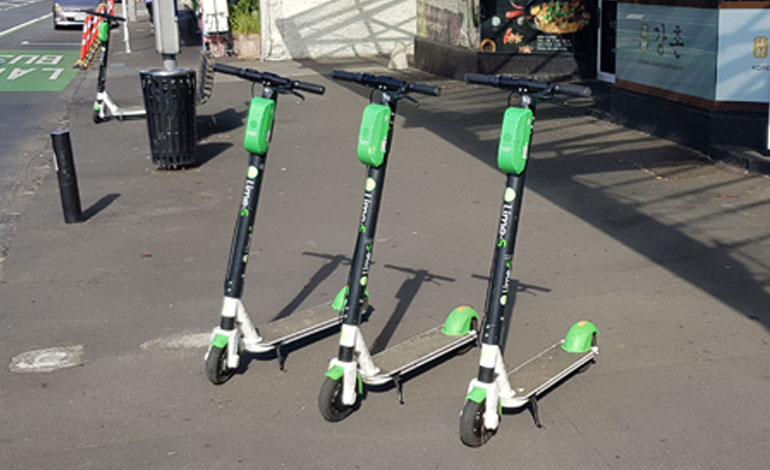When a disruptive technology hits your district, it’s really disruptive.

When Aucklanders woke up on the quiet spring morning of October 15 last year to the sight of 500 green scooters standing to attention on city corners, they had no idea that an invasion was underway. By the end of the following weekend everyone had spotted someone riding these grown-up kids’ toys and heard at least one anecdotal account of one having been ridden over the Harbour Bridge.
Now, the green scooters and their competitors’ products are all over Auckland and many other parts of the country. Accidents are plentiful and pedestrians and motorists alike are complaining big time. But not even the on-set of cold and rain this winter has slowed their growth in use.
Far from it. In fact, since e-scooters have been discovered, the sales of private versions have soared. A quick web search will reveal literally hundreds of models and review sites from all over the world. Yes, this is a global pandemic.
Furthermore, it is not limited to e-scooters. E-bicycles have been around for a while and now there are e-tricycles, e-skateboards, and a plethora of blended personal e-vehicles that you can stand or sit on to be transported from place to place at leisure.
So, what does this mean for local authorities? While the pay and ride model may not necessarily prove profitable over time, the fact that people have discovered cheap, fun and practicable personal transport over short to moderate distances is a permanent disruptive change. And the impact of that change must be addressed.
The issues are myriad and far-reaching. Almost the first thing that happened was that people started getting hurt. Both those piloting the scooters and those getting in their way. So, an early question, yet to be satisfactorily answered, is what manner of vehicle is an e-scooter and what rules – such as safety standards, traffic rules, speed restrictions and bylaws – are applicable to them?
LOCAL AUTHORITIES URGENTLY NEED TO REVISE ROAD CONSTRUCTION AND RECONSTRUCTION PLANS.
No one seems to know because riders use footpaths, cycle lanes and road carriageways with equal impunity. They move about with or without safety gear (usually without), and (at least initially) with no apparent regulation of the equipment itself.
But the regulatory issue is perhaps the least important aspect of this mini revolution in personal transport. Local authorities are addressing these issues, and perhaps there will be statutory changes as well.
What seems to me more important and interesting is what it means for the form of our roads, already being adapted in urban areas to be more user-friendly for pedestrians and cyclists. The millions of dollars already spent and budgeted to re-build roads to accommodate cycle-lanes and keep pedestrians safe, may already be a waste of time and money.
Where do you ride your e-scooter or e-skateboard? On the road? In the cycle-lane? On the footpath? Should you be able to share a bus-lane like a bicycle?
None of the design parameters now being used apply, and local authorities urgently need to revise road construction and reconstruction plans to decide just how this is going to work.
It calls into serious question just how roads should be designed. We have been anticipating more electric motor vehicles, the need for charging stations, and the future use of driverless vehicles. Now another technology has arisen that is here right now and already changing personal transport patterns in our cities.
Which leads to another big question – what will the effects be on public transport? I can get from my inner-city office to my city fringe apartment on an e-scooter faster than in my car or by bus. Certainly, personal transportation devices will not serve longer trips. But they may reduce the number of buses currently clogging CBDs.
It’s yet another problem / opportunity for local government for which they need to seek out and apply solutions based on the four well-beings. But quickly please.
- Linda O’Reilly. Partner, Brookfields Lawyers.
oreilly@brookfields.co.nz
This article was first published in the July 2019 issue of NZ Local Government Magazine.



